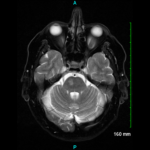The Study
An international team of researchers randomly assigned 428 patients with new-onset or relapsing GCA to three groups and followed them for 52 weeks. Along with tapered glucocorticoids for 26 weeks, 209 patients received 15 mg/day of upadacitinib and 107 received 7.5 mg/day of upadacitinib. In the third group, 112 patients received a placebo on a 52-week glucocorticoid tapering schedule.
The study’s primary end point was sustained remission at week 52, defined by the absence of signs or symptoms of GCA from week 12 through week 52 and adherence to the protocol-specified glucocorticoid taper. Secondary end points included a stricter complete remission standard, meaning sustained remission plus normalization of the erythrocyte sedimentation rate and C-reactive protein levels from week 12 through week 52.
For complete remission, the 15 mg dose was superior to placebo. Proportions of patients achieving complete remission were 37.1% in the 15 mg/day group, 26.2% in the 7.5 mg/day group and 16.1% in the placebo group.
The 15 mg dose was also superior to placebo for disease flares. Just over one-third (34.3%) of patients receiving 15 mg had at least one disease flare, vs. 55.6% of patients who received the placebo. The median total cumulative exposure to glucocorticoids over the course of 52 weeks was 1,615 mg for the patients receiving 15 mg/day, vs. 2,882 mg for the patients receiving the placebo.
Because upadacitinib at a dose of 7.5 mg was not superior to placebo for sustained remission at week 52, researchers did not examine secondary end points for this dose.
The study revealed no new upadacitinib safety risks, Dr. Blockmans notes. Safety outcomes during the 52-week treatment period were similar for the upadacitinib and placebo groups. Although previous studies have shown cardiovascular risk as a potential concern with a JAK inhibitor,2 no major adverse cardiovascular events occurred in the upadacitinib groups.
Serious infections were more common among the placebo group, affecting 10.7% of these patients, vs. 5.7% of the patients receiving 15 mg/day. Given the patients were predominantly elderly, Dr. Blockmans was surprised that no patients in either upadacitinib arm suffered major cardiac events. Meanwhile, 1.8% of patients on placebo did.
Overall, observed adverse events occurred in 95.7% of the patients receiving 15 mg/day, compared with 93.8% in the placebo group. Of these, 22.5% of patients receiving 15 mg/day suffered serious events, compared with 21.4% in the placebo group. In the 15 mg group, 14.8% of patients discontinued the drug due to adverse events, vs. 19.6% in the placebo group.

